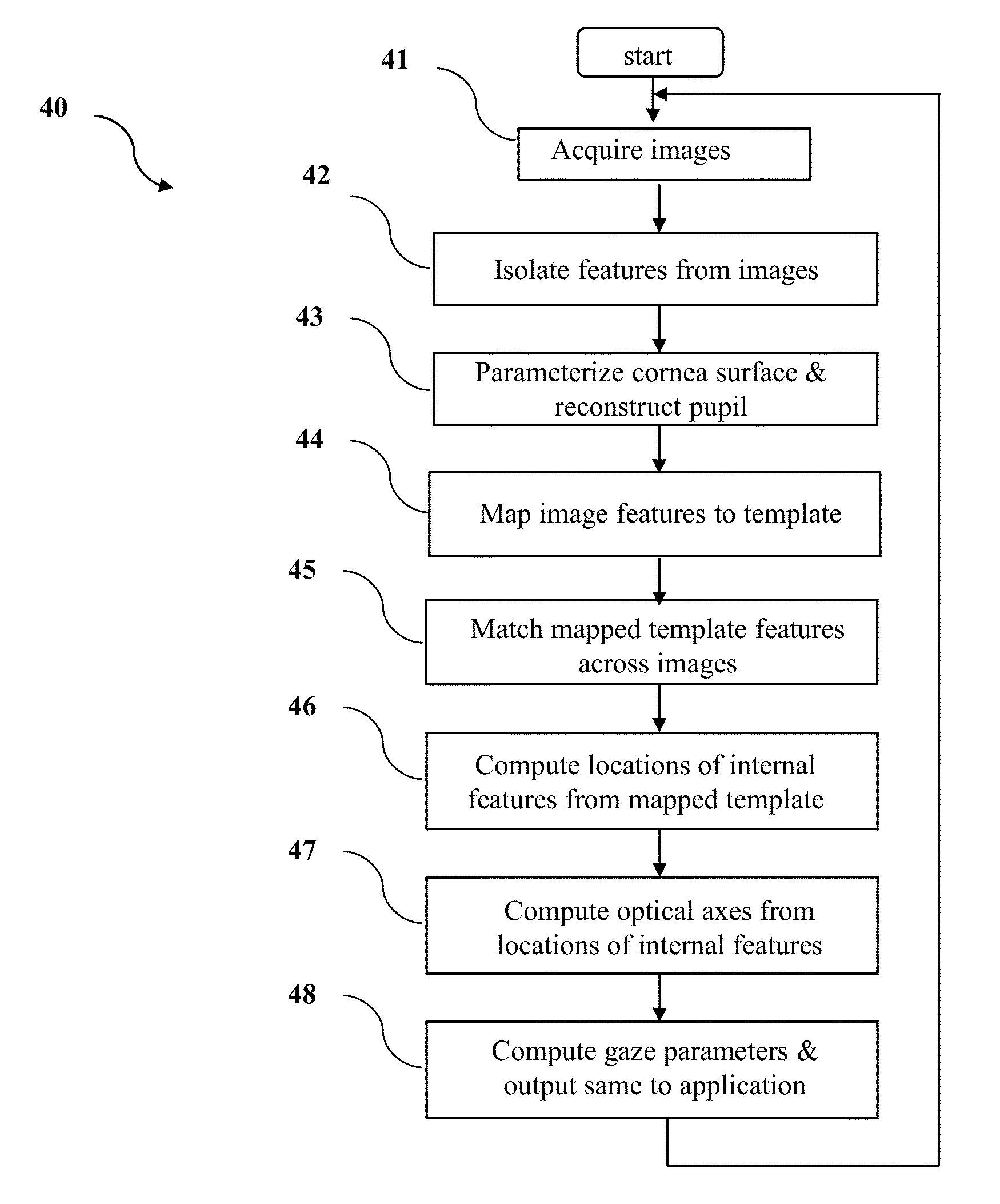Apparatus and method for determining eye gaze from stereo-optic views
a stereo-optic view and eye gaze technology, applied in the field of optical instrument design, can solve the problems of inability to easily place objects that users may need to work with between the face and the optics, the limited light level of the panel mounted system, and the potential limitations or drawbacks of single light sensor us
- Summary
- Abstract
- Description
- Claims
- Application Information
AI Technical Summary
Benefits of technology
Problems solved by technology
Method used
Image
Examples
Embodiment Construction
[0084]Disclosed herein are systems and methods for tracking an eye. More particularly, disclosed are an eye-tracking system and method that employ multiple views of the eye that provide image data that is processed to determine at least a gaze direction of an eye.
[0085]Referring now to the drawings, in which like numerals indicate corresponding parts throughout the several views, FIG. 1 illustrates an eye 10 of a user (e.g., a wearer of an eye-tracking mechanism) illuminated by a light source 11. Positioned on opposite sides (e.g., opposed lateral sides) of the eye 10 are optical systems 12, 14 and light sensors 16, 18. The optical systems 12, 14 each comprise one or more lenses and / or mirrors that are used to direct and focus light that reflects off of the eye 10 on their associated light sensors 16, 18. The light sensors 16, 18 receive the reflected light (i.e., light rays), which is used to determine the gaze direction of the eye. More particularly, the light sensors 16, 18 gener...
PUM
 Login to View More
Login to View More Abstract
Description
Claims
Application Information
 Login to View More
Login to View More - R&D
- Intellectual Property
- Life Sciences
- Materials
- Tech Scout
- Unparalleled Data Quality
- Higher Quality Content
- 60% Fewer Hallucinations
Browse by: Latest US Patents, China's latest patents, Technical Efficacy Thesaurus, Application Domain, Technology Topic, Popular Technical Reports.
© 2025 PatSnap. All rights reserved.Legal|Privacy policy|Modern Slavery Act Transparency Statement|Sitemap|About US| Contact US: help@patsnap.com



